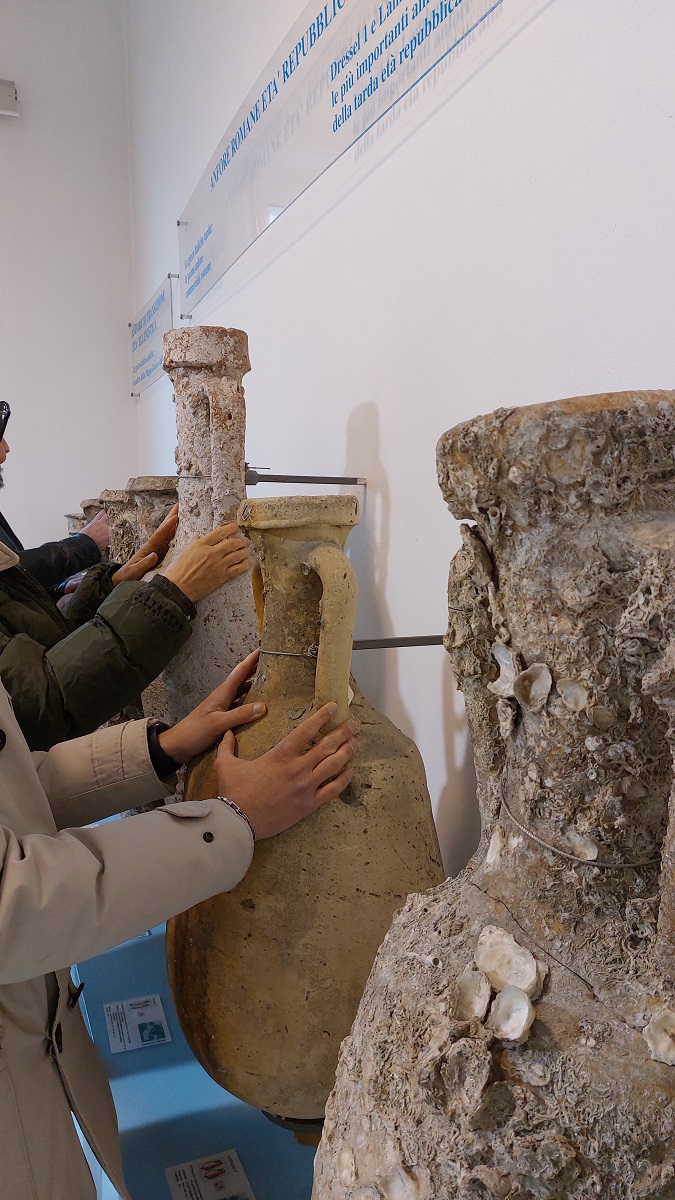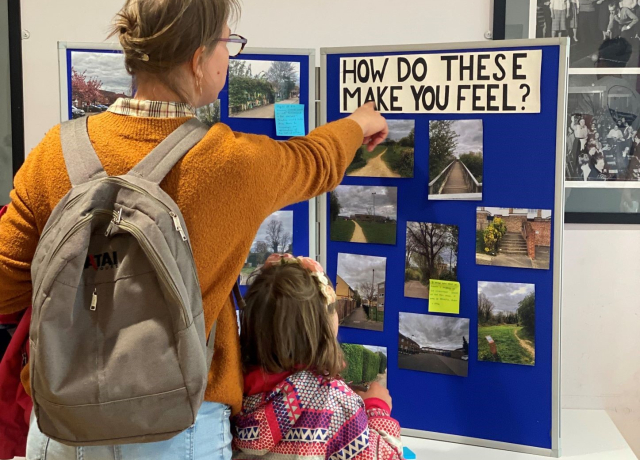European Heritage Days Article:
Heritage as a Path to Social Connection and Sustainability
European Heritage Days Article:
Heritage as a Path to Social Connection and Sustainability
Photo: Community consultation (credit, Ed Nix, The Changing Faces of Rose Hill, Rose Hill Community Centre, Oxford Preservation Trust)
As we look forward to publishing the 2025 edition, we reflect on past projects that have been awarded grants of up to 10,000 EUR. From fostering a sense of place and belonging to empowering communities in protecting heritage sites from environmental damage, these initiatives in Greece, Italy, and England highlight the power of heritage to create meaningful social connections and a more sustainable future.
HeritAngels: Defenders of Monuments – Greece
Project background and activities
The HeritAngels Story was about the impact of climate change on historic places and focussed on community engagement, fostering active citizenship amongst young people, and strengthening cooperation with local cultural professionals to take actions to protect archaeological sites and monuments in Greece.
Extending the project, the European Heritage Days Stories grant was used for an educational program for children aged 6 to 11. Organisers hoped to strengthen community cohesion through the values and importance of local cultural heritage and by demonstrating how individuals can help reduce the impact of climate change on historic places. During interactive activities such as theatrical performances, treasure hunts, and relay races on-site at the Archaeological Site of Nemea, the children gained critical thinking skills, learned about the importance of preserving such sites and were encouraged to work together in teams to help create a sense of common purpose. A phase of voluntary action took place after the sessions in which the students helped to clean flammable materials such as leaves from the Ancient Stadium of Nemea to help prepare and safeguard the site for an upcoming Olympic Flame Handover Ceremony, providing them with an opportunity to directly contribute to the protection of their cultural heritage.
Outcomes and future plans
Over 240 children took part and communication between the archaeological site and educators was strengthened. Teachers responded positively to the educational value and active participation promoted by the project, while organisers reported this approach also led to an increased sense of cultural heritage ownership and responsibility which they anticipate will be taken forward by the children into the future. Follow-up activities such as workshops and seminars are now being considered, with the aim of scaling-up the initiative to establish sustainable frameworks for community engagement with heritage preservation.
Mnemosyne, The Museum for Everyone – Italy
Project background and activities
The Sea Museum in San Benedetto represents the maritime culture of the residents of this coastal area in Italy. Founded by a local fishing group in the 1950s, the organisation’s ethos to be a ‘community museum’ is told in the Mnemosyne Story, which explains the development of initiatives to promote a sense of belonging such links to the local fish market.
The grant from European Heritage Days Stories was used to create activities which emphasised the importance of the community as protagonists in their heritage. Through the ‘Guides for a Day’ activity, visitors were encouraged to experience the museum through the perspective of disabled residents who took on the role of tour guides. Techniques such as sign language to communicate or blind-folding participants to require them to discover museum collections through their other senses were designed to encourage reflection and raise awareness about the importance of inclusivity. Another activity, ‘Roots, Voices of the Sea’ aimed to connect people across the generations by asking older people to take the role of ‘museum narrators’. Tours about the fishing history of the city were held with accompanying narrators including retired fishermen, fish traders, and rope makers providing personal history. Intergenerational dialogue was also encouraged at a series of children’s workshops to which their grandparents were invited to participate in activities such as weaving fishing nets together.

Outcomes and future plans
The project helped contribute to the museum’s community goals, involving a wide range of ages from primary school to those aged over 80. It received positive feedback from disabled participants and provided higher accessibility through the creation of tactile panels and use of a sign language interpreter. It has also resulted in an internship at the museum for a disabled young person. Other entities and authorities have since expressed interest in the initiatives, and the museum is looking into ongoing funding to continue implementation of the activities.
Discovering Heritage and Green Spaces: Wood Farm – England
Project background and activities
Discovering the Heritage of Rose Hill was a Story submitted by the Oxford Preservation Trust and focussed on an often-overlooked area of the city. A free self-guided walk uncovered the area’s past dating back to the Iron Age through to the industrial and social history of the 20th and 21st centuries with a focus on spaces impacting everyday lives such as allotments and graffiti walls.
Through the Stories grant, the project was expanded to another area in Oxford, the Wood Farm neighbourhood, creating a self-guided walk which linked to the 2024 European Heritage Days shared theme of Routes, Networks and Connections. Key objectives included promoting health and well-being through use of public community spaces and outdoor activities, generating a sense of place amongst diverse communities and being inclusive to all. By building links with local groups, the city council and other stakeholders, the project was designed to connect with the community through activities, communication channels and participation opportunities specifically focussed to them. The route was also informed by residents and former residents who were encouraged to suggest places and buildings which were important to them to add to the walk, as well as providing feedback of drafts at a series of engagement events.
Outcomes and future plans
The self-guided walk of Wood Farm is now available for the general public as both a free printed leaflet at community centres, local shops and primary schools and as an online download. The majority of those involved in the planning stages have continued to support and contribute to the project and organisers are now looking to use the walk as a resource to reach a wider audience through connections with schools and other groups. They are also talking to the council with the aim of developing the outcomes of the project by linking it with future plans for local amenities.
Looking Ahead
The inspiring projects from the 2023 edition of European Heritage Days Stories highlight the vital role heritage plays in connecting communities and promoting sustainability. As we move through the 2025 edition, these stories serve as a reminder of how cultural heritage can drive meaningful change. Stay tuned for more opportunities to share and celebrate the diverse heritage initiatives shaping Europe’s future.
